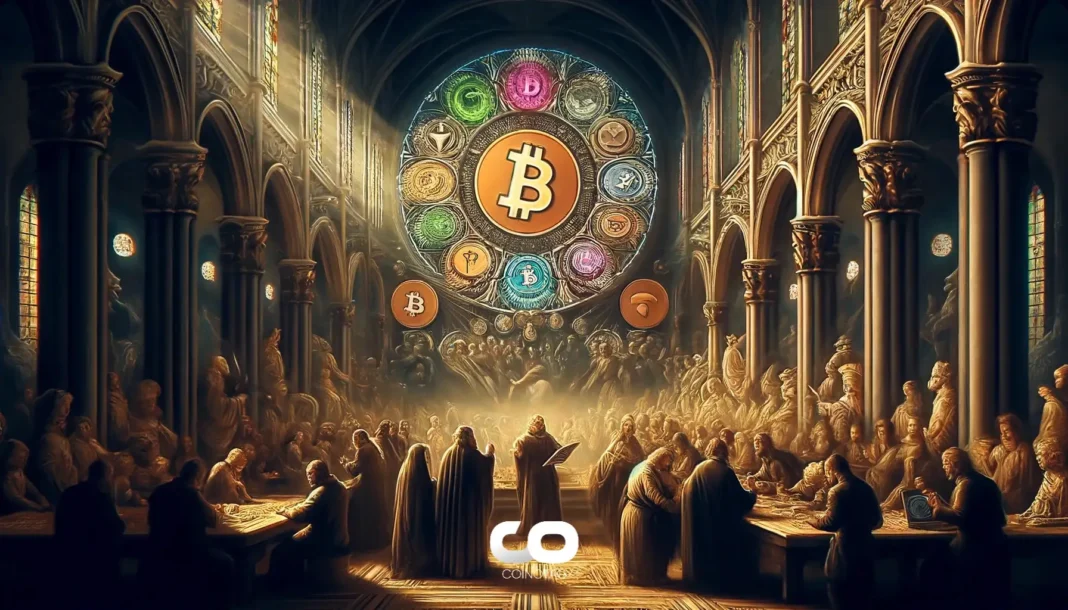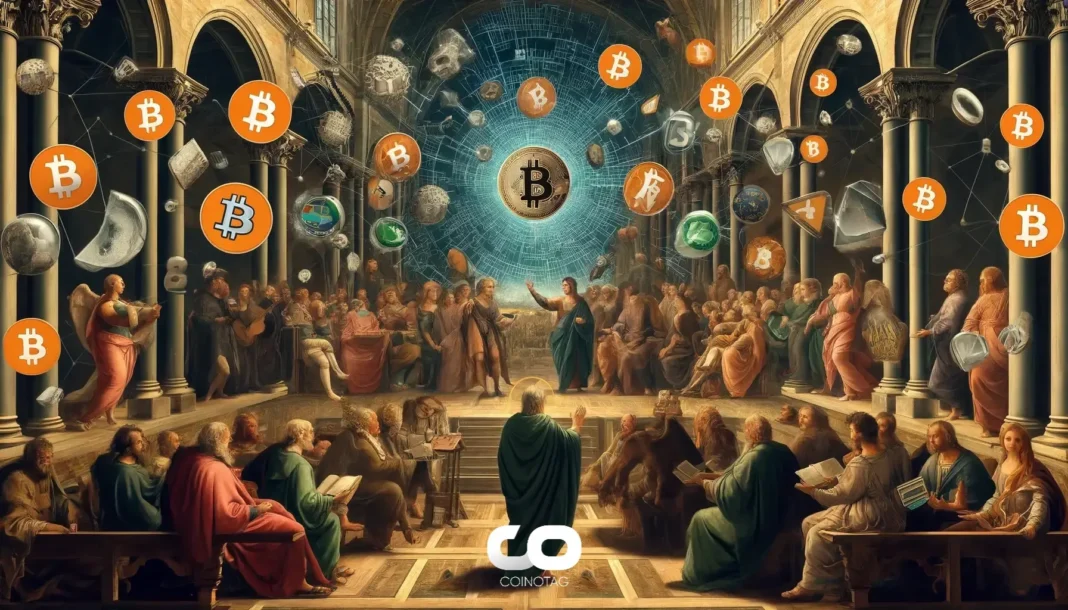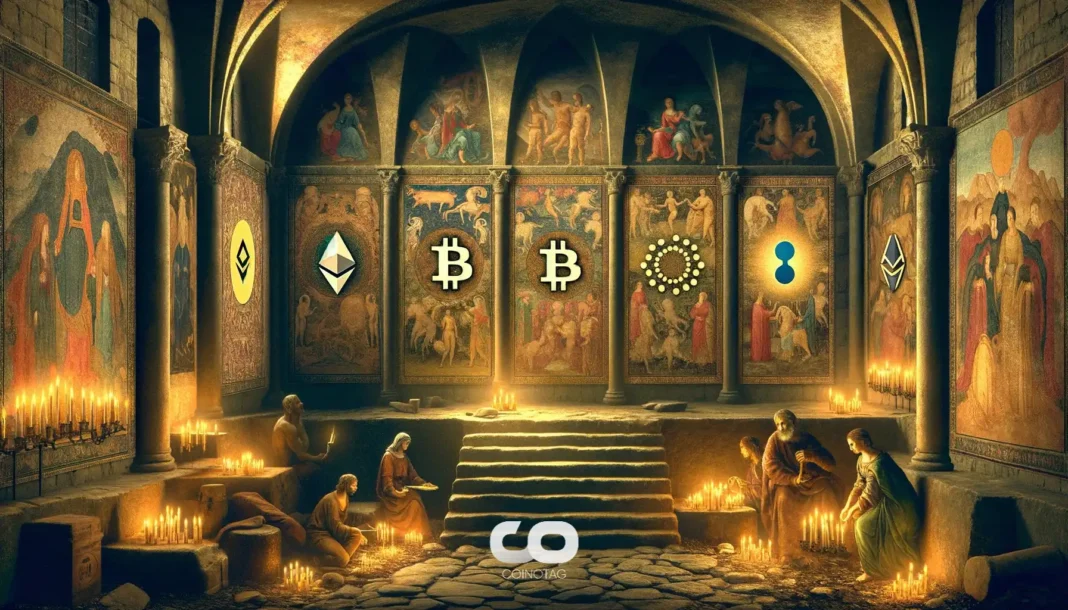| COINOTAG recommends • Exchange signup |
| 💹 Trade with pro tools |
| Fast execution, robust charts, clean risk controls. |
| 👉 Open account → |
| COINOTAG recommends • Exchange signup |
| 🚀 Smooth orders, clear control |
| Advanced order types and market depth in one view. |
| 👉 Create account → |
| COINOTAG recommends • Exchange signup |
| 📈 Clarity in volatile markets |
| Plan entries & exits, manage positions with discipline. |
| 👉 Sign up → |
| COINOTAG recommends • Exchange signup |
| ⚡ Speed, depth, reliability |
| Execute confidently when timing matters. |
| 👉 Open account → |
| COINOTAG recommends • Exchange signup |
| 🧭 A focused workflow for traders |
| Alerts, watchlists, and a repeatable process. |
| 👉 Get started → |
| COINOTAG recommends • Exchange signup |
| ✅ Data‑driven decisions |
| Focus on process—not noise. |
| 👉 Sign up → |
-
Dave Portnoy’s recent foray into the crypto space with his GREED token led to a dramatic 99% price crash, raising significant ethical concerns in the meme coin market.
-
Despite facing backlash from investors, Portnoy has swiftly introduced GREED2 and begun promoting JAILSTOOL, leading to accusations of hypocrisy.
-
Critics have heavily criticized Portnoy for allegedly exploiting his follower base for personal profit, suggesting his actions reflect a broader trend of greed in the cryptocurrency sector.
Dave Portnoy’s GREED token crash raises concerns about ethics in crypto trading as he launches GREED2 and promotes JAILSTOOL amid investor backlash.
The Ethics of Portnoy’s Token Sales and Investor Trust
Portnoy’s involvement with the GREED token exemplifies ongoing ethical dilemmas emerging in the cryptocurrency space. With Portnoy purchasing a staggering 357.92 million GREED tokens—amounting to 35.79% of the total supply—his sudden sell-off led to a catastrophic drop in price. Reports indicate he profited around $258,000, while many investors were left to grapple with losses exceeding their initial investments.
Such stark contrasts between influencer intentions and investor outcomes raise vital questions about market manipulation and the responsibilities of public figures within the crypto ecosystem. The fallout from this incident has sparked a conversation about whether individuals with substantial influence should hold large shares of new tokens, especially considering their potential for a swift exit.
Implications of Market Manipulation in Meme Coins
The GREED debacle is not an isolated incident, as it echoes broader issues plaguing the meme coin market, including accusations of “rug pulls” and lack of transparency. On-chain analyst Lookonchain revealed the dismal fate of one investor who lost over $101,000 within hours of purchasing GREED—underscoring the risky environment for unsophisticated retail investors.
| COINOTAG recommends • Professional traders group |
| 💎 Join a professional trading community |
| Work with senior traders, research‑backed setups, and risk‑first frameworks. |
| 👉 Join the group → |
| COINOTAG recommends • Professional traders group |
| 📊 Transparent performance, real process |
| Spot strategies with documented months of triple‑digit runs during strong trends; futures plans use defined R:R and sizing. |
| 👉 Get access → |
| COINOTAG recommends • Professional traders group |
| 🧭 Research → Plan → Execute |
| Daily levels, watchlists, and post‑trade reviews to build consistency. |
| 👉 Join now → |
| COINOTAG recommends • Professional traders group |
| 🛡️ Risk comes first |
| Sizing methods, invalidation rules, and R‑multiples baked into every plan. |
| 👉 Start today → |
| COINOTAG recommends • Professional traders group |
| 🧠 Learn the “why” behind each trade |
| Live breakdowns, playbooks, and framework‑first education. |
| 👉 Join the group → |
| COINOTAG recommends • Professional traders group |
| 🚀 Insider • APEX • INNER CIRCLE |
| Choose the depth you need—tools, coaching, and member rooms. |
| 👉 Explore tiers → |
Portnoy’s prior engagement in the LIBRA meme coin scandal—where he returned over 6 million tokens due to disclosure issues—further complicates the narrative of trust in his crypto ventures. As the space evolves, the need for increased regulatory scrutiny and clearer guidelines is becoming more evident, especially in mitigating the risks that come with such volatile investments.
Continued Controversy with GREED2
As discussions around **Portnoy’s ethical obligations** unfold, his launch of GREED2 has added another layer of intrigue. With him claiming a substantial portion of the new token’s supply, many investors remain wary, fearing a repeat of past mistakes.
| COINOTAG recommends • Exchange signup |
| 📈 Clear interface, precise orders |
| Sharp entries & exits with actionable alerts. |
| 👉 Create free account → |
| COINOTAG recommends • Exchange signup |
| 🧠 Smarter tools. Better decisions. |
| Depth analytics and risk features in one view. |
| 👉 Sign up → |
| COINOTAG recommends • Exchange signup |
| 🎯 Take control of entries & exits |
| Set alerts, define stops, execute consistently. |
| 👉 Open account → |
| COINOTAG recommends • Exchange signup |
| 🛠️ From idea to execution |
| Turn setups into plans with practical order types. |
| 👉 Join now → |
| COINOTAG recommends • Exchange signup |
| 📋 Trade your plan |
| Watchlists and routing that support focus. |
| 👉 Get started → |
| COINOTAG recommends • Exchange signup |
| 📊 Precision without the noise |
| Data‑first workflows for active traders. |
| 👉 Sign up → |
“Don’t invest more than you can afford to lose,” he cautioned in his announcement. However, the sentiment from the community reflects skepticism towards his assurances, as highlighted by comments accusing him of promoting potential failures while disparaging others in similar situations.
Portnoy’s Strategy with JAILSTOOL: A New Angle in His Crypto Journey
In parallel with the launch of GREED2, Portnoy’s promotion of JAILSTOOL has raised eyebrows. While he claims to have invested his GREED profits into this new venture, direction concerning his involvement remains murky. Critics argue that this approach is merely shifting the narrative while capitalizing on existing investor trust.
| COINOTAG recommends • Traders club |
| ⚡ Futures with discipline |
| Defined R:R, pre‑set invalidation, execution checklists. |
| 👉 Join the club → |
| COINOTAG recommends • Traders club |
| 🎯 Spot strategies that compound |
| Momentum & accumulation frameworks managed with clear risk. |
| 👉 Get access → |
| COINOTAG recommends • Traders club |
| 🏛️ APEX tier for serious traders |
| Deep dives, analyst Q&A, and accountability sprints. |
| 👉 Explore APEX → |
| COINOTAG recommends • Traders club |
| 📈 Real‑time market structure |
| Key levels, liquidity zones, and actionable context. |
| 👉 Join now → |
| COINOTAG recommends • Traders club |
| 🔔 Smart alerts, not noise |
| Context‑rich notifications tied to plans and risk—never hype. |
| 👉 Get access → |
| COINOTAG recommends • Traders club |
| 🤝 Peer review & coaching |
| Hands‑on feedback that sharpens execution and risk control. |
| 👉 Join the club → |
Moreover, his recent comments about the meme coin market’s inherent greed culture have only fueled the backlash. Portnoy’s characterization of the market as one where individuals are merely trying to profit off each other might be accurate; however, skeptics point towards a contradiction in his actions as he simultaneously profits from these ventures.
Conclusion
The situation surrounding Portnoy’s GREED token and subsequent actions serves as a cautionary tale for both influencers and investors navigating the unpredictable world of meme coins. As ethical questions loom, investors must remain vigilant and well-informed, especially when drawn into projects heralded by influential figures. The evolving narrative reflects the necessity for greater accountability in the crypto space, prompting contemplations on how best to protect retail investors from the pitfalls of speculative trading.
| COINOTAG recommends • Members‑only research |
| 📌 Curated setups, clearly explained |
| Entry, invalidation, targets, and R:R defined before execution. |
| 👉 Get access → |
| COINOTAG recommends • Members‑only research |
| 🧠 Data‑led decision making |
| Technical + flow + context synthesized into actionable plans. |
| 👉 Join now → |
| COINOTAG recommends • Members‑only research |
| 🧱 Consistency over hype |
| Repeatable rules, realistic expectations, and a calmer mindset. |
| 👉 Get access → |
| COINOTAG recommends • Members‑only research |
| 🕒 Patience is an edge |
| Wait for confirmation and manage risk with checklists. |
| 👉 Join now → |
| COINOTAG recommends • Members‑only research |
| 💼 Professional mentorship |
| Guidance from seasoned traders and structured feedback loops. |
| 👉 Get access → |
| COINOTAG recommends • Members‑only research |
| 🧮 Track • Review • Improve |
| Documented PnL tracking and post‑mortems to accelerate learning. |
| 👉 Join now → |







